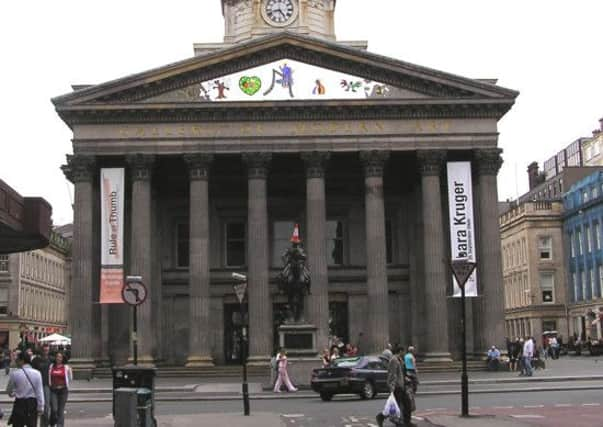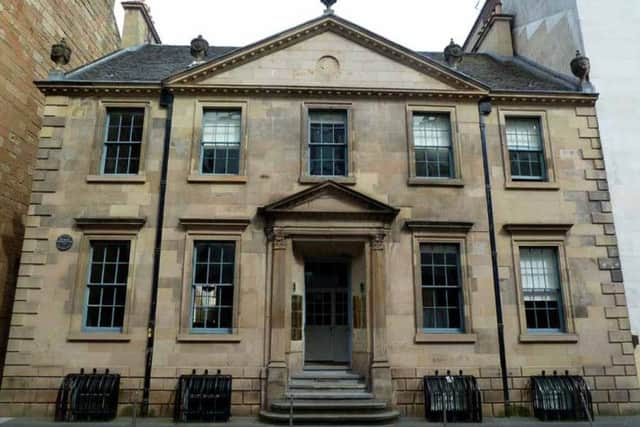Lost Glasgow: The tobacco lords


Glasgow received its first shipments of tobacco in the 1670s, but it would be another three decades before such direct trade could be conducted regularly and legitimately. The 1707 Act of Union allowed Scotland access to the vast English colonial markets across the world - particularly in North America. European demand for Virginia leaf was insatiable, and the small burgh of Glasgow, with its direct access to the North Atlantic via the Clyde, soon found itself in a hugely-enviable position.
In comparison to London, ships departing from the Clyde were within touching distance of the Trade Winds of the North Atlantic, cutting journey times by up to twenty days. This was a significant advantage, as was the decision by the government of France to provide Glasgow with a monopoly over all tobacco imports into French territories. Glasgow had hit the jackpot.
Dominating the market


Advertisement
Hide AdBetween 1740 and 1770, Glasgow’s tobacco trade with the New World was at its height. During this time, 40-50 per cent of all Europe’s tobacco imports arrived at Glasgow, Port Glasgow and Greenock, with the precious commodity accounting for 80 per cent of all Scottish re-exports.
From the 1750s onwards, the Clyde was handling a larger share of Europe’s tobacco than all the British ports combined. Glasgow’s tobacco lords reigned supreme and their lavish townhouses littered the growing city centre which spread west from the Trongate. Leading tobacco and sugar plantation owner, William Cunninghame, parted with enough cash to build a mansion fit for a king. Today we know the former Cunningham Mansion as the Gallery of Modern Art on Royal Exchange Square. Other notable tobacco lords such as John Glassford, Andrew Buchanan and Archibald Ingram were immortalised in the names of major streets. Virginia Street, Jamaica Street, Tobago Street and the Kingston Bridge continue to reflect the sources of their wealth.
Tobacco had built Glasgow, but success came at a heavy moral price.
Chains and slavery
During the 18th century an estimated 1.5 million slaves were transported from West Africa to the Americas by British ships. They were part of the infamous Triangular Trade which turned people into commodities. Goods such as cloth, copper and firearms left Britain to be exchanged for slaves in West Africa, who would then be shipped across the Atlantic to work on plantations in America and the West Indies. The tobacco, cotton, sugar and rum that the slaves produced would then be shipped back to Britain. Glasgow benefitted considerably from the slave trade, but would later find itself at the forefront of the abolitionist movement.
Decline of the tobacco trade
As the American Wars of Independence kicked off in 1775, the continuance of Glasgow’s tobacco empire was under serious threat. Once the dust settled in 1783, the newly-founded American republic could cut out the middle men and trade with Europe on its own. Glasgow’s tobacco merchants soon dwindled with many going out of business altogether – one such man being renowned tobacco lord, John Glassford, who died in 1783 with debts close to £100,000. Those that survived were forced to adapt their business model, with many continuing to make good profits from importing cotton from the West Indies. Scotland’s days as a major tobacco trader were over, but half a century of commercial success and the massive investment in infrastructure which went with it meant all was not lost.
During the age of the tobacco lords, the city had grown from a small town of less than 20,000 to a booming metropolis approaching 200,000 citizens. Britain was on the brink of a new industrial dawn, and cities such as Glasgow, were well-equipped to flourish.
• Visit Lost Glasgow on their Facebook page.
SEE ALSO
CONNECT WITH THE SCOTSMAN
Advertisement
Hide Ad• Subscribe to our daily newsletter (requires registration) and get the latest news, sport and business headlines delivered to your inbox every morning